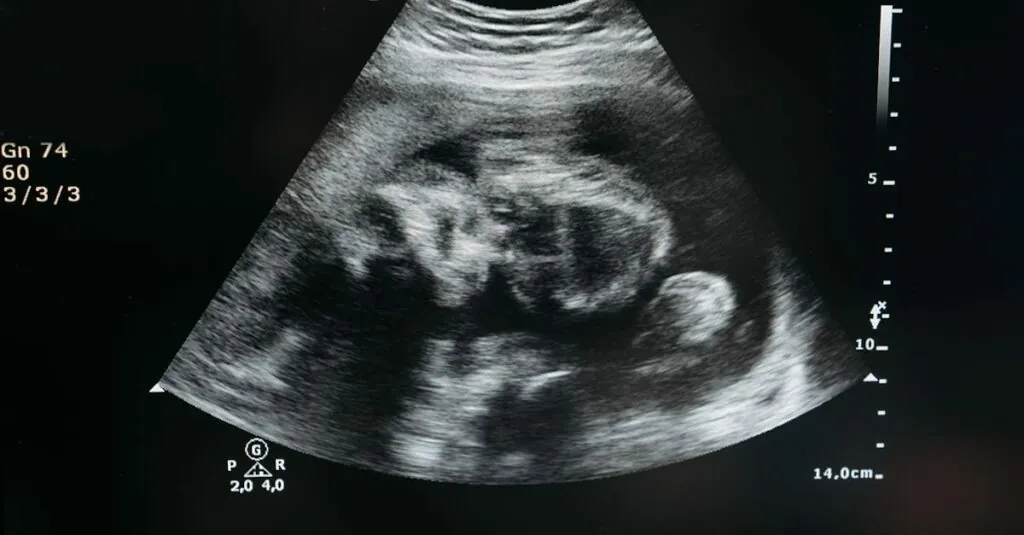Table of Contents
ToggleExpecting a little one? Get ready to meet your baby in a way that’ll make your heart do a happy dance. A 3D pregnancy ultrasound isn’t just a medical procedure; it’s like peeking behind the curtain of a magical show. Gone are the days of grainy black-and-white images. Now, parents can see their baby’s tiny features in stunning detail, from button noses to adorable yawns.
What Is 3D Pregnancy Ultrasound?
3D pregnancy ultrasound is an advanced imaging technique that provides expectant parents with three-dimensional visualizations of their unborn baby. This technology captures multiple images of the fetus from various angles, creating a multi-dimensional representation. Parents can observe their baby’s features in a way that traditional two-dimensional ultrasounds cannot achieve.
With 3D ultrasounds, clarity improves significantly, revealing details such as facial expressions and hand movements. High-resolution images enhance the emotional connection between parents and their baby, offering a more intimate experience. Expectant parents often appreciate the ability to see their baby smiling, yawning, or even waving.
Many obstetricians recommend 3D ultrasounds for specific medical reasons, including assessing fetal development and identifying abnormalities. This imaging technique can also play a role in determining the baby’s position and health. Some clinics offer elective 3D ultrasounds, providing parents an opportunity to bond with their unborn child.
While 3D pregnancy ultrasounds are generally safe, their use remains recommended primarily for medical purposes. Regular ultrasounds are essential for monitoring a baby’s growth and well-being throughout the pregnancy. Hospitals and clinics utilize trained professionals to perform these scans, ensuring accuracy and safety.
The excitement surrounding 3D ultrasounds pushes many expectant parents to schedule these sessions as part of their prenatal care. Enthusiasm often resonates during these appointments as families gather to witness the miracle of life in real-time. This innovative approach offers a new way to celebrate impending parenthood, creating lasting memories along the way.
Benefits of 3D Pregnancy Ultrasound
3D pregnancy ultrasounds offer various advantages that enhance the prenatal experience. These benefits significantly impact both medical assessment and emotional bonding.
Enhanced Visualization
Clarity in imaging improves with 3D technology. Parents see detailed features of their unborn baby, such as expressions and movements. This advanced visualization captures the fetus from different angles, revealing intricate details like fingers and facial contours. Medical professionals value this technology for accurately assessing fetal growth and spotting potential abnormalities. Expecting parents cherish these images, as they retain the clarity that traditional 2D images lack. Visualizing the baby in three dimensions fosters greater understanding of development over time.
Emotional Connection
The emotional bond between parents and their baby deepens with 3D ultrasounds. Witnessing the baby’s movements, like yawning and smiling, creates memorable moments. Parents often feel a stronger connection when they see detailed features on a screen. These experiences enhance anticipation for the baby’s arrival. Some families treasure these images as keepsakes or share them with loved ones. Strengthening this emotional aspect can make the overall pregnancy journey more fulfilling. As engaging moments occur during these sessions, many parents express joy and excitement about their growing family.
How 3D Pregnancy Ultrasound Works
3D pregnancy ultrasounds use advanced technology to provide expectant parents with vivid images of their unborn baby. These images enhance the emotional experience of prenatal care.
Technology Behind the Imaging
This imaging technique employs ultrasound waves, which are sound waves that humans can’t hear. A transducer emits these waves, bouncing off the fetus and surrounding structures. The reflected waves return to the transducer, where software processes them into three-dimensional images. High-resolution imaging technology captures multiple angles, creating detailed visualizations that show features like the baby’s expressions and movements. These advancements in ultrasound technology allow medical professionals to assess fetal health more accurately while fostering a stronger connection between the parents and their baby.
Procedure and Process
The 3D ultrasound procedure typically takes place in a clinical setting. Expectant mothers lie comfortably on an examination table while a gel applies to the abdomen. This gel enhances sound wave transmission. The technician moves the transducer over the skin to capture various images of the fetus. Sessions last about 30 to 45 minutes, allowing ample time for capturing clear visuals. Afterward, parents often receive printouts or digital images of their baby. This process not only provides essential medical insights but also creates memorable bonding experiences for families.
Limitations of 3D Pregnancy Ultrasound
3D pregnancy ultrasounds offer vivid images, but limitations exist. Technical factors can affect image quality. For example, maternal obesity or the baby’s position might obstruct clear visuals, hindering accurate assessments.
Some medical professionals maintain limited diagnostic value for routine use. High-resolution images might not contribute significantly to medical evaluations when compared to standard 2D ultrasounds. Furthermore, the procedure focuses primarily on imaging and lacks comprehensive evaluations of fetal health.
Cost represents another limitation. Many families face high expenses due to elective sessions, as these procedures often aren’t covered by insurance. Such financial barriers mean some couples forgo 3D ultrasounds altogether.
Time constraints may impact the availability of these ultrasounds. Longer sessions require additional scheduling, which can be challenging for busy families. Many expectant parents seek convenience, and the timing of these images may not align with their schedules.
Pregnancy complications might lead healthcare providers to recommend caution. Risks associated with extended ultrasound exposure can arise, particularly in high-risk pregnancies. These sessions should only occur under medical guidance, emphasizing the importance of professional oversight.
Expectant parents may experience emotional responses to the imagery, leading to unrealistic expectations. Viewing detailed pictures of their baby can evoke strong feelings, potentially creating anxiety if the outcome contrasts with their hopes.
Attention to limitations fosters informed choices. Families considering 3D pregnancy ultrasounds should discuss the benefits and constraints with healthcare providers to ensure a comprehensive understanding of their situation.
Safety Considerations
3D pregnancy ultrasounds offer significant benefits, yet certain safety considerations must be addressed. Health organizations emphasize that medical professionals should always conduct these procedures with caution. Extended exposure to ultrasound waves poses risks, especially in high-risk pregnancies, where monitoring becomes vital. Expectant parents may consider discussing frequency and necessity with their healthcare provider to ensure optimal safety.
Technical factors during the session can also impact outcomes. Maternal obesity or the baby’s position can affect image quality, leading to less effective assessments. While many clinics provide elective 3D ultrasounds for bonding experiences, prioritizing medical recommendations remains crucial. Insurance often does not cover elective sessions, increasing costs for families.
Shorter sessions may reduce any potential risks while still providing valuable imagery. Parents may appreciate only having a few short sessions rather than extended viewing times. Emotional responses from powerful images can also lead to unrealistic expectations. Parents might feel anxiety if the actual outcomes differ from the beautiful images captured.
Research indicates that 3D ultrasounds are generally safe when used appropriately. Clinicians advocate for utilizing these advanced imaging techniques primarily for medical purposes rather than entertainment. Those interested in 3D ultrasounds should engage in open discussions with their healthcare provider, ensuring comprehensive understanding and care throughout the pregnancy journey.
3D pregnancy ultrasounds offer a remarkable opportunity for expectant parents to connect with their unborn baby in an emotionally enriching way. The vivid imagery captures precious moments that foster a deeper bond and understanding of fetal development. While these advanced imaging techniques provide significant benefits for both medical assessments and emotional experiences, it’s essential for families to prioritize safety and discuss their options with healthcare providers. By approaching 3D ultrasounds with informed expectations, parents can cherish these unique experiences while ensuring the well-being of both mother and baby throughout the pregnancy journey.








